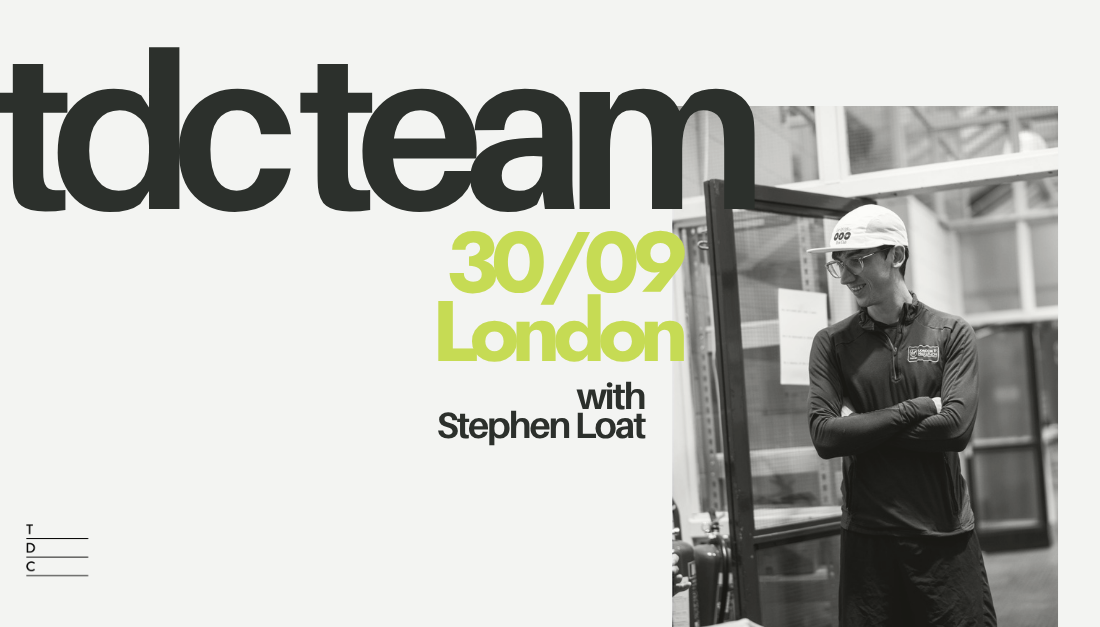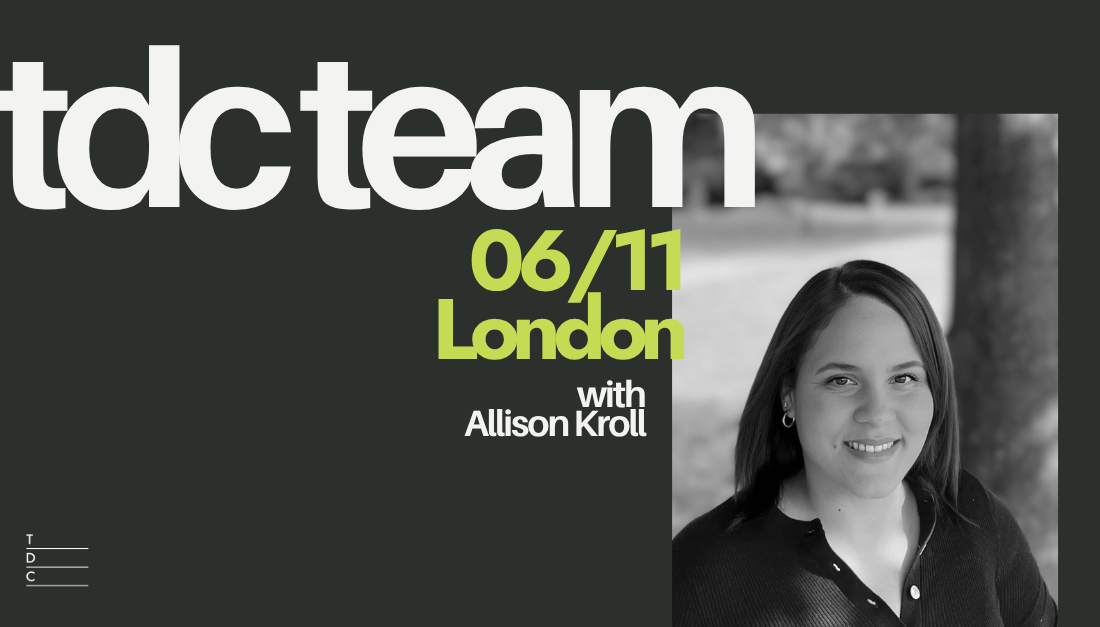TDC Team: Meet Stephen Loat

As part of our new team Q&A series, we’re introducing Stephen Loat, Account Manager, who brings a passion for storytelling, creativity, and innovation to TDC. From his early experiences in PR across sport, lifestyle, and literature, to exploring the intersection of data and design, Stephen shares his insights on what makes communications effective today and how digital and AI are shaping the future of PR.
Q: Tell us a bit about yourself and your career journey so far.
A: Hello, my name is Stephen. I am 28 years old and originally from Llandrindod Wells in Wales. I studied History at Warwick University, where a stint as Publicity & Communications Officer for Warwick Bears Ultimate Frisbee Club gave me a taste for PR & Comms. I took on my first PR role shortly after graduating, and it’s fair to say I’ve been hooked ever since.
I started off in-house before moving agency-side and have worked in a range of sectors, including sport, lifestyle, and literature.
Away from my desk, I’m a keen hobbyist and always looking for opportunities to try new things. Since moving to London in 2021, I have enjoyed taking up Salsa, and you can often find me out on a run or cycle ride.
Q: What drew you to PR, and what excites you most about working in this field?
A: I think my love of PR is rooted in my deep sense of curiosity about the world. I love to scratch away at things, find out what’s going on underneath the surface, what’s driving it, etc. I think that’s ultimately the job of a journalist, and I relish playing my part in helping a journalist understand the why as well as the what behind what our clients are doing.
In terms of what excites me about working in this field, I think there are many things, but if I had to pick one, it would be the innovation I get to see and discuss that truly feels cutting-edge and future-shaping. The work our clients are doing in the design space, especially work that touches on AI and XR, is really exciting and speaks to their expertise in not only meeting the demands of today, but also mapping out the design needs of tomorrow.
Q: Within PR, what areas or types of projects are you most passionate about?
A: I touched upon innovation above; however, that’s not the only area I’m passionate about.
I also love anything and everything creative. I recently interviewed Mark Ainsworth, for our SODA magazine, and we discussed the intersectionality between data and creativity. Mark is an insight and data leader with a degree from Oxford in Experimental Psychology and a Master’s in Operational Research. Our conversation, which spanned his work crafting innovative bubble charts in the 90s (pre-Microsoft excel!) to transforming the way the McLaren F1 team visually presented their data to race engineers, was a great reminder that creativity is less about what you do – e.g. paint a picture – and more to do with how you think.
It’s for this reason that one of the things I love to work on with our clients is thought leadership – exploring the thinking and strategy behind their work. To me, it’s shining a light on the great creativity and ingenuity behind our clients’ projects that showcases where the magic really happens and gives great insight into how you go from making good work to groundbreaking work.
Q: In the fast-moving world of design, branding and creativity, what do you think makes PR truly effective today?
A: What makes PR truly effective today is what has made PR truly effective from the beginning – our hardwired love of stories. From the story of the economy, to the story of how a new running shoe will help you smash your PB, consumers continue to look to the media to help them navigate the world as it is now and how it will impact the world of tomorrow, or 2025 or 2055.
What makes PR more challenging in 2025, but also full of more opportunities, is the sheer range of channels our clients now have at their disposal. From traditional media to social media and the likes of LinkedIn, Threads, X, Snapchat, and many more, it can feel overwhelming. That’s where our digital team can help, highlighting what channels are best depending on your desired outcomes and also auditing where you’re currently at with the channels you are already active on.
As I say, it’s a challenge, but it’s a good one to have, and, as a PR, I love exploring digital PR opportunities just as much as I love a good old-fashioned phone pitch to a journalist at The Times or The FT.
Q: Technology is reshaping communications fast. What’s your view on how innovation — from AI to digital platforms — is influencing PR, and how should brands adapt?
A: As we see the rise of AI tools and the integration of it into many aspects of our lives – including within the creative funnel – I think thought leadership and shining a light on the ‘magic moments’ that lead to fantastic design work is going to become more and more important. This is where I think it’s less a case of brands adapting by doing something new, and more of a case of leaning more into one of the greatest assets they should already have – expertise.
AI is a fantastic tool, and I’m a fan of it, but I’m also acutely aware of its limits. Working with the fantastic clients we do, you really get a sense of the sheer skill, creativity, and ingenuity that goes into great work – something that AI is yet to (and may never) truly be able to replicate or understand. I see my job as working with clients to lift the lid on that and then getting journalists hooked onto it too.
Q: What role does Digital PR play in building brand visibility today?
A: I think digital PR has a vital role to play in building brand visibility today – on multiple fronts. That being said, I’ll just focus on one in particular for now – SEO & AEO. In the creative industries, it’s long been known that producing remarkable work is only half the battle – the other half is making sure people can actually find it. This is where Digital PR becomes a powerful engine for discoverability.
Traditionally, Digital PR has been closely tied to search engine optimisation (SEO). When your business is mentioned or featured on high-authority websites (i.e. ones that rank highly on Google Search), those backlinks strengthen your domain authority, improving your chances of ranking higher yourself in search results. That means when potential clients, partners, or collaborators are actively looking for design expertise, innovation studios, or creative partners, your brand is far more likely to appear in front of them.
But discoverability is evolving. We’re moving beyond traditional search and into the era of AI Engine Optimisation (AEO) – making sure your brand and expertise are surfaced by AI-powered platforms like ChatGPT, Perplexity, and other generative search tools. These platforms increasingly draw on trusted, high-quality sources to generate answers, as well as social media sites like Reddit and LinkedIn. If your brand has consistent Digital PR coverage in respected outlets, industry publications, and blogs, as well as a consistent brand voice on sites like LinkedIn, you increase the chances that your work, opinions, and expertise are woven directly into AI-generated responses.
For creative businesses, this is a critical shift. Clients aren’t just Googling; they’re asking AI engines for recommendations, inspiration, and expertise. Digital PR ensures your brand isn’t invisible in this new landscape and helps build the credibility and content footprint that both search engines and AI engines use to decide which voices matter.
In short, strong Digital PR doesn’t just get you noticed today; it sets your brand up to be discoverable tomorrow, wherever the next wave of search and discovery happens.
We’re excited to have Stephen on board and can’t wait for you to get to know more of the TDC team in the months ahead. In the meantime, if you’d like to connect with us, you can reach the team here.
